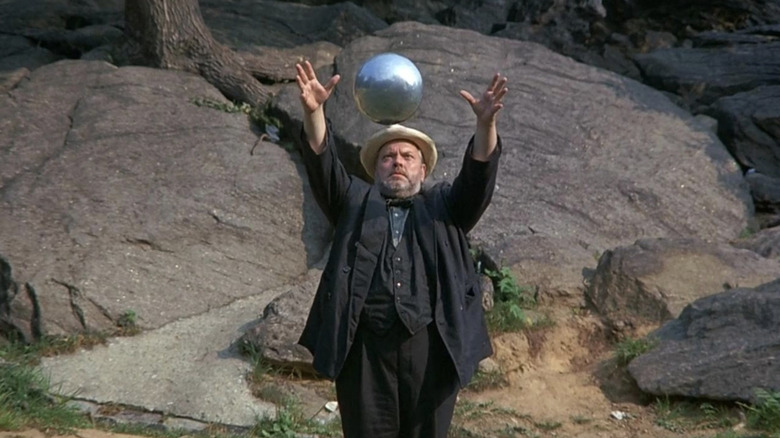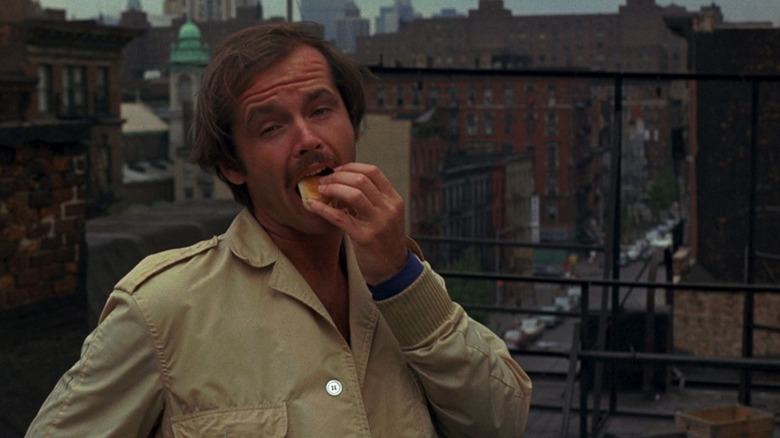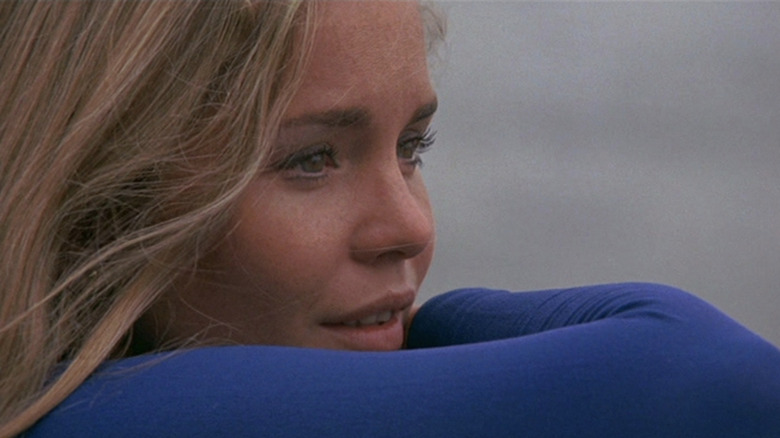
If you’ve delved into any American film history over the years, you’ve no doubt come across the sentiment that the 1970s was the best period for American cinema, bar none. Of course, any claim of opinion is up for debate, but the reasons for historians and critics coming to this conclusion are harder to deny, as pound for pound, the various conditions needed for filmmaking were particularly favorable during that decade. To wit: the collapse of the Hays Code and the institution of the Motion Picture Association of America allowed for a heretofore unprecedented level of uncensored content in American movies. The “studio system” and a reliance on stars to open movies were quickly becoming things of the past, and while corporate conglomerates were now in charge of the major studios (something which has led to our current state of multiplex stagnation in 2024), at this early stage, the suits had no idea what sorts of films to produce.
Enter “Easy Rider” and its production company, BBS Productions (which was still known as Raybert Productions). The film, distributed by an ailing Columbia Pictures (whom Raybert had a relationship with thanks to their producing “The Monkees” TV show for Columbia’s Screen Gems brand), made upwards of $60 million over a budget of somewhere around $400,000. A movie blatantly inspired by European New Wave cinema of the 1960s, “Easy Rider” effectively kicked off an American New Wave, a New Hollywood, something which BBS sought to continue with their next several features, which included such luminaries as “The Last Picture Show” and “Five Easy Pieces.”
Not every BBS production hit it big or was well received, however. One of the few flops the production company released was “A Safe Place,” written and directed in 1971 by Henry Jaglom (who had been the editor on “Easy Rider”). Although the film’s reputation hasn’t increased much over the years, it is a proud inclusion on the Criterion Collection’s box set release of BBS’ films. In addition to being an underrated effort, “A Safe Place” not only features superlative work from star Tuesday Weld, but also brings together BBS staple Jack Nicholson and Jaglom’s lifelong friend, the movie maverick himself, Orson Welles.
Welles and Nicholson help make ‘A Safe Place’ authentically daring
“A Safe Place” is a film ostensibly about a woman known as both Susan and Noah (Weld), whose life, especially her relationships with her lovers Fred (Philip Proctor) and Mitch (Nicholson), is tainted by her unnamed mental illness. She harbors an obsession with her childhood coupled with a sense of foreboding about the unsafe, adult world at large, an obsession encapsulated by the memory of her encounter with a failed European Magician (Welles) as a girl, where he showed her a series of objects that she believes hold significance for her life and her troubles. Taking a cue from filmmakers like Federico Fellini, Ingmar Bergman, Alain Resnais, and Welles himself (and presaging other directors like David Lynch and Terrence Malick), Jaglom makes “A Safe Place” a knowingly daring bit of experimental cinema.
Contemporary critics were not so kind to the film, using the fact that the 94-minute movie was edited down from 50+ hours of footage as evidence that the film is a pointless slog. Time magazine called it “pretentious and confusing,” and what little evidence we have of the film’s box office take seems to indicate that general audiences felt much the same way. Confusing it may be, but Jaglom isn’t being self-consciously pretentious; the movie is adapted from his stage play that he produced at the Actor’s Studio in the mid-’60s, meaning that its experimental nature is baked into the material from the start, and not the work of someone throwing artifice around thoughtlessly.
As further proof of Jaglom’s bonafides, look no further than the presence of Welles and Nicholson. Sure, both artists could and did end up in projects unworthy of their talents, but “A Safe Place” doesn’t betray their turns here. Their contribution to the film reflects Jaglom’s interest in both cinema history (and magic) with Welles and grounded realism with Nicholson. To that latter point, Jaglom has admitted on several occasions (including his commentary track for the film) how the story is based on his own life, combined with the character and musings of both Weld and Jaglom’s ex, actress Karen Black, meaning that “A Safe Place” is no mere flight of fancy, but an artist’s genuine attempt to make sense of his and others’ thoughts and emotions.
‘A Safe Place’ is essential Tuesday Weld
While it’s great to see Nicholson add another character to his roster of troubled men of the ’70s, and to see Welles riff on his stature as both godfather of modern cinema and ersatz magician, the real reason to watch “A Safe Place” is Tuesday Weld. One of the greatest actresses of her generation, Weld made a sharp turn out of her early career as a hoped-for blonde bombshell sex symbol into playing complex, troubled women who demanded to be heard. The rise of the women’s liberation movement of the ’60s and ’70s (part of second-wave feminism) helped contribute to a wave of New Hollywood films that took the “woman’s picture” of the ’50s into a new realm of emotional and psychological complexity. Movies like “Puzzle of a Downfall Child,” “Diary of a Mad Housewife,” “Images,” and perhaps Weld’s finest hour, “Play it as it Lays,” all fall into this category, and “A Safe Place” absolutely belongs amongst them.
In addition to the movie’s surreal structure, part of why “A Safe Place” hasn’t been as fully embraced as it should be some 50-plus years after its release is because it’s a genuinely sad movie about suicide, and not just in the usual form of a self-destructive act of despair. It deals with the theme in a variety of ways, looking at it as both a metaphorical killing of one’s persona as well as an escape all its own. Weld’s mercurial nature, her ability to be both childlike and moody, lends itself perfectly to Susan/Noah and Jaglom’s dream logic, making the film as much of a character study as it is a narrative puzzle. It may be difficult to embrace the movie’s confusion, but it’s much easier to appreciate how complicated and well-rounded Weld’s performance is. It’s because of her that “A Safe Place” shouldn’t be dismissed as a bizarre flop, but as a challenging slice of American cinema that still has relevance today.




Leave a Reply